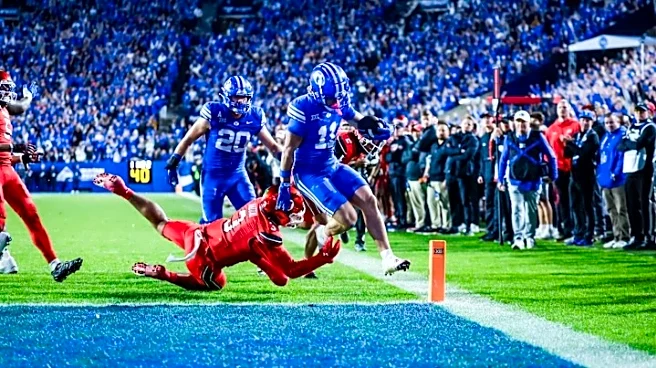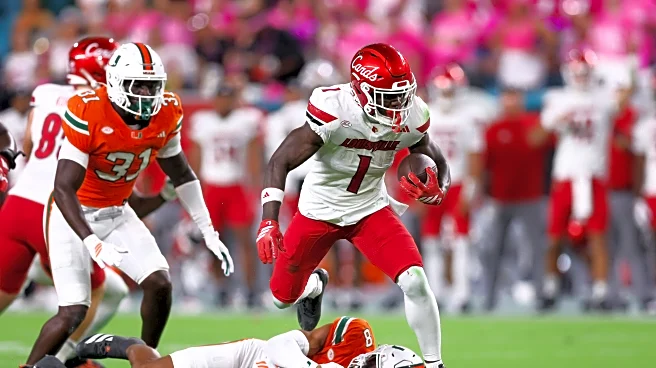What's Happening?
The landscape of college football is undergoing significant changes, marking the end of the dynasty era. This shift is driven by factors such as the transfer portal, player compensation, and an expanded
playoff field. Traditional powerhouses like Ohio State and Alabama are facing existential challenges, while teams like Indiana and Georgia Tech are emerging as strong contenders. The new 12-team playoff system is altering the competitive dynamics, making the sport more unpredictable and akin to the NFL, where losing a few games does not lead to a meltdown.
Why It's Important?
The transformation in college football is reshaping the sport's competitive balance, offering more teams the opportunity to compete at the highest level. This change could democratize talent distribution, as players are no longer bound to stay with top programs for development. The expanded playoff system increases the stakes for more teams, potentially enhancing fan engagement and viewership. It also challenges coaches to adapt their strategies beyond recruitment, focusing on game-day decisions and player development.
What's Next?
As the season progresses, teams will continue to adapt to the new playoff format and player movement dynamics. Coaches and programs may need to revise their recruitment and development strategies to remain competitive. The upcoming games will test the resilience and adaptability of traditional powerhouses and emerging teams alike. Stakeholders, including broadcasters and sponsors, may adjust their investments based on the evolving competitive landscape.
Beyond the Headlines
The shift in college football could have long-term implications for the sport's culture and economics. The increased parity may lead to more diverse championship contenders, altering historical narratives and rivalries. Additionally, the focus on player compensation and movement might influence NCAA policies and regulations, potentially leading to broader reforms in college athletics.













